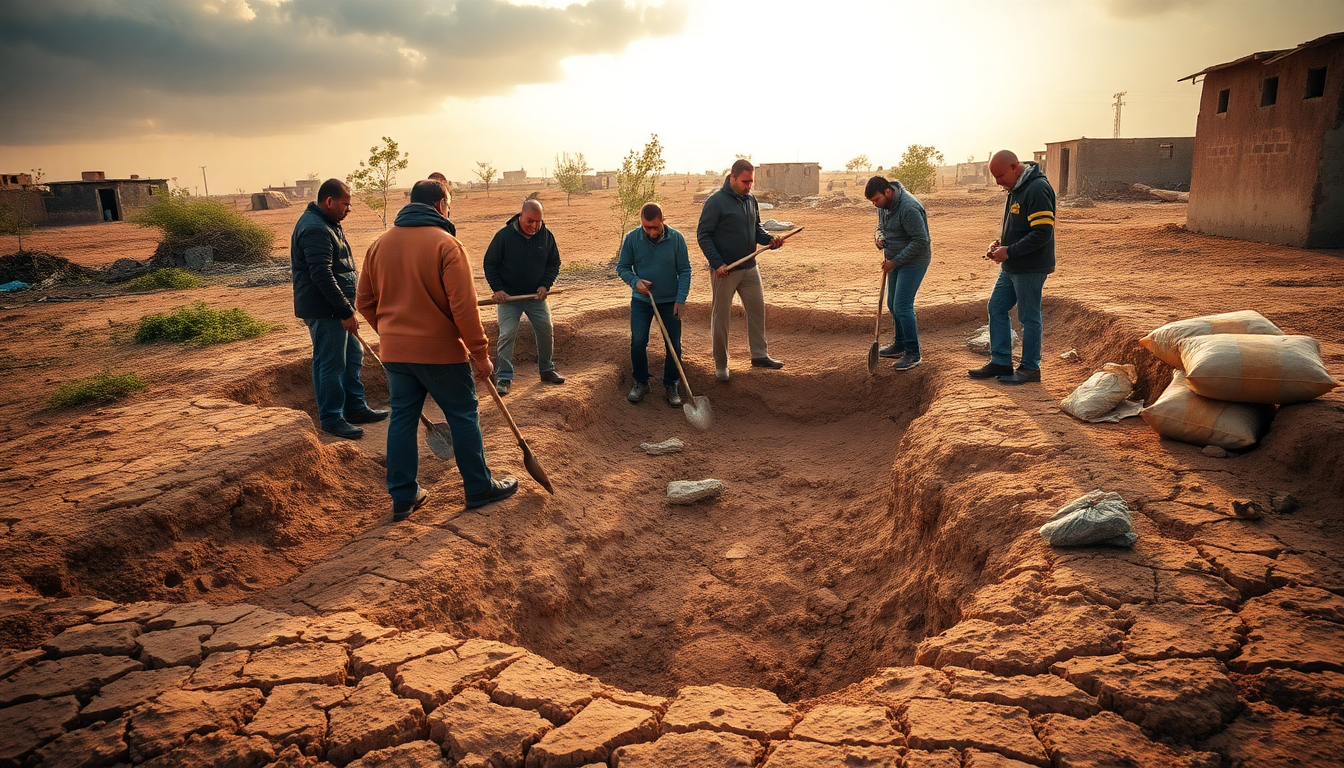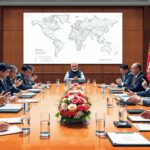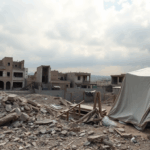Table of Contents
In a significant development, Iraqi officials have taken on the challenging task of excavating what is believed to be a mass grave, thought to hold the remains of victims of the Islamic State (IS) terror group. This initiative underscores the ongoing struggle to confront the atrocities committed during IS’s reign and is taking place in al-Khafsa, just south of Mosul—an area that witnessed immense suffering a decade ago.
Collaborative Efforts for Excavation
The excavation represents a collaborative effort involving local authorities, judicial bodies, forensic experts, and Iraq’s Martyrs’ Foundation. According to the Iraqi News Agency, the operation kicked off on August 9, following a request from the Governor of Nineveh province.
Ahmad Qusay al-Asady, who heads the mass graves excavation department at the Martyrs Foundation, explained that the team is focused on gathering any visible human remains and surface evidence, laying the groundwork for a more comprehensive exhumation process in the future.
Isn’t it remarkable how a community can come together in the face of such tragedy?
Initially, the operation is limited to surface-level investigations. The complexities of the site, which is fraught with hazards like sulfur water and unexploded ordnance, require specialized assistance before full-scale exhumation can proceed.
Al-Asady emphasized the need to establish a DNA database to facilitate the identification of remains, indicating that this crucial step must precede the actual exhumation. How do you think technology could aid in such sensitive operations?
Historical Context and the Scale of Atrocities
Witness accounts and investigative reports suggest that the Khasfa site could potentially hold thousands of bodies, marking it as one of the largest mass graves in modern Iraqi history. The Islamic State’s brutal tactics, including mass executions of civilians and the targeting of religious minorities like the Yazidis, have left a haunting legacy across Iraq and Syria.
At its peak, IS controlled vast territories and became infamous for its ruthless violence, which included beheadings and sexual slavery. It’s hard to fathom the depth of suffering experienced by so many, isn’t it?
The defeat of IS in July 2017, when Iraqi forces reclaimed Mosul, marked a turning point in the fight against extremism. Subsequent victories, including the capture of Raqqa in Syria, ended the conflict, but the scars of war remain. The excavation at Khasfa serves as a poignant reminder of the need for justice and closure for the families of the victims. Will this effort finally bring some peace to those who have suffered?
Looking Ahead: Identification and Justice
As the excavation progresses, attention will shift towards collecting DNA samples from families of suspected victims. This step is crucial for accurate identification and will help build a comprehensive database to support ongoing investigations into missing persons. Rabah Nouri Attiyah, a lawyer involved in multiple cases of missing individuals in Nineveh, highlighted the importance of this operation in uncovering the truth behind the fate of many families affected by IS’s brutality. How vital is it for families to find closure in such heartbreaking circumstances?
While the Martyrs Foundation has yet to confirm the Khasfa site as the largest mass grave discovered, its size and the volume of remains expected to be recovered emphasize the historical significance of this excavation. As the investigation unfolds, it brings hope to many families seeking answers and closure regarding their loved ones. Isn’t it a powerful step towards healing for those left behind?





